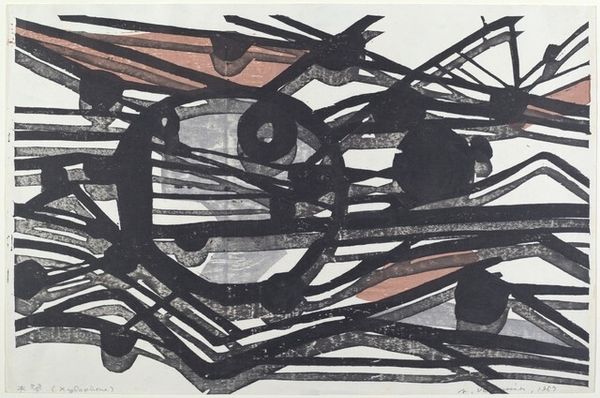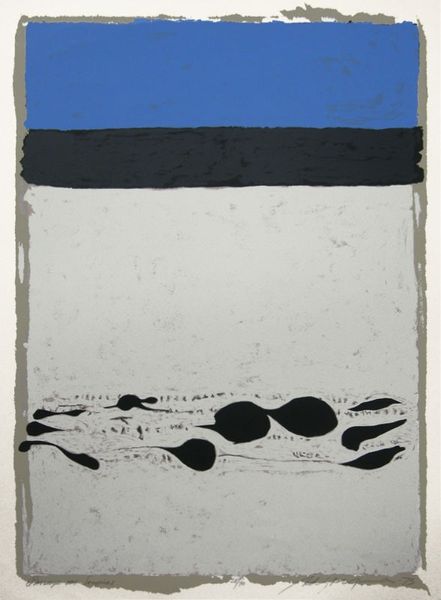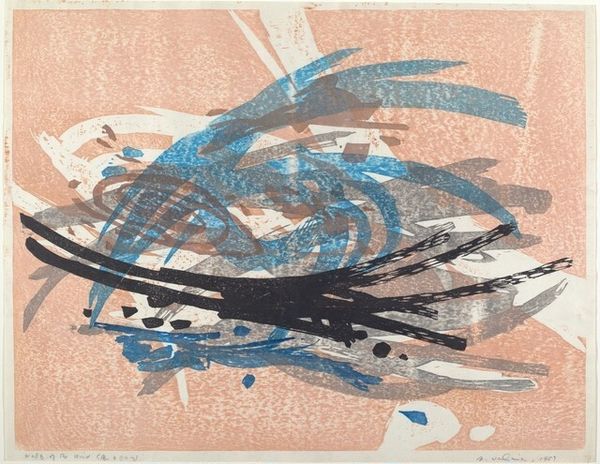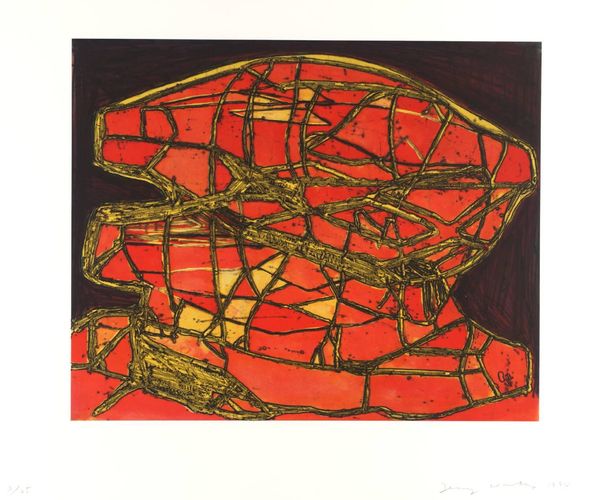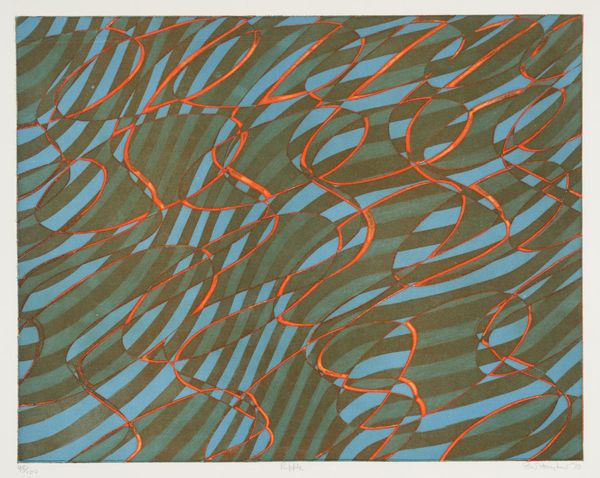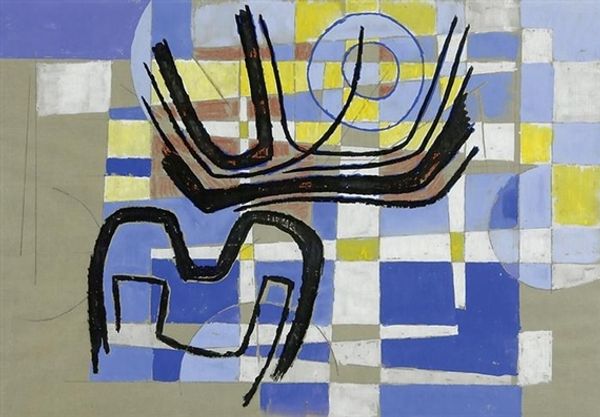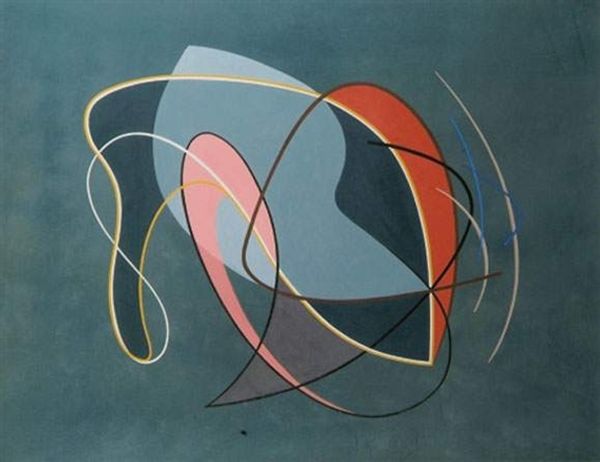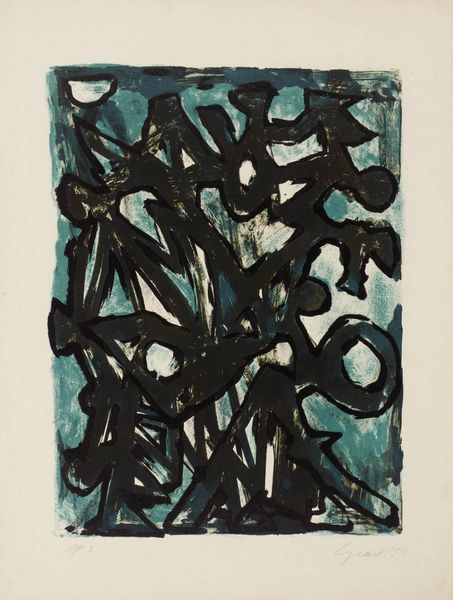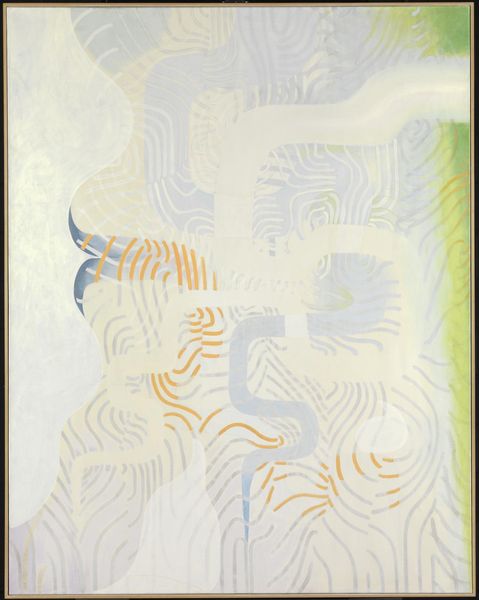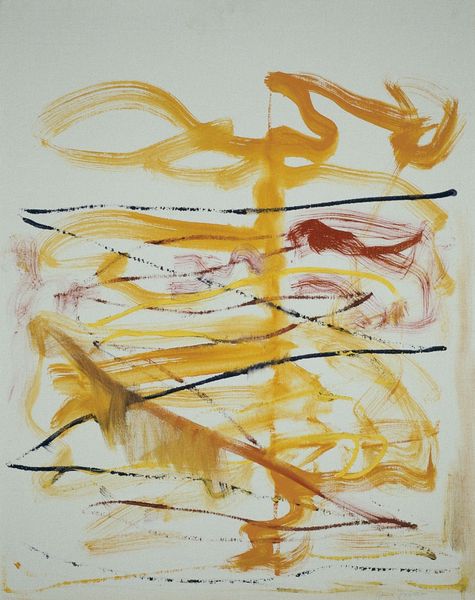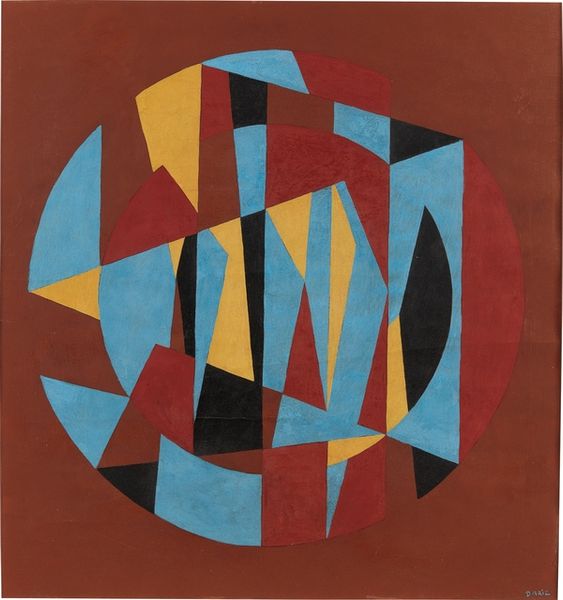
mixed-media, painting
#
abstract-expressionism
#
abstract expressionism
#
mixed-media
#
abstract painting
#
painting
#
form
#
abstraction
#
line
Copyright: Alfred Manessier,Fair Use
Editor: Alfred Manessier’s "Morte eau," created in 1954 using mixed media, presents a rather intriguing arrangement. The way he's layered the shapes and colours creates a kind of floating, ambiguous space. What are your thoughts on this work? Curator: I find it particularly interesting to consider the process and materials in "Morte eau." Look at how Manessier uses line and form; the shapes aren’t merely decorative. The making of these forms, their relationship to each other, and the materiality of the pigments create a sense of depth, albeit an illusionistic one. The materials themselves - oil, perhaps tempera, even the canvas texture - contribute to the overall experience of “water.” Editor: So you are saying the material itself is essential for conveying the art piece’s purpose? Curator: Precisely! The term "mixed media" implies an active, conscious decision in combining these elements, potentially creating new textures and depths unavailable through single-medium use. This ties directly into how we perceive abstraction – is it purely formal, or does the physicality of the materials themselves impart meaning, recalling the "low" material origins in this so-called "high" art? Editor: I hadn't considered how much the physical act of layering those different media contributes to the overall feeling of depth and ambiguity. Curator: It makes you consider the labor and materials present and accessible to Manessier, right? We need to ask who supplied his canvas, or crafted his brushes? His supplies connect directly to systems of production and consumption! Editor: That's fascinating! Considering the context of its production changes the way you read the painting. Curator: Exactly! Shifting away from thinking about only aesthetics, and examining how the making process contributes meaning, will change the way you view art.
Comments
No comments
Be the first to comment and join the conversation on the ultimate creative platform.
